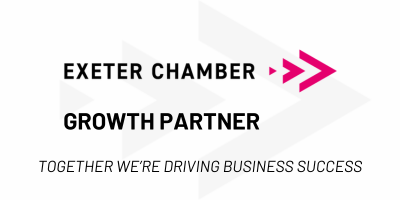In today's digital age, email remains a cornerstone of marketing strategies, offering a direct line to your audience's inbox. However, not all emails are created equal, and the difference between an email that converts and one that ends up in the spam folder can be subtle.
Whether you’re a seasoned marketer or just starting out, understanding the nuances of effective email marketing is crucial. This article highlights five key tips to start enhancing your email marketing efforts and drive meaningful engagement.
1. Avoid the dreaded “noreply@” trend.
No matter how much time and effort you put into creating the perfect email and subject line that will drive opens and clicks, a ‘noreply@’ email will likely be marked as spam and never opened in the first place. GDPR laws also require that you provide your audience with the ability to opt out of email communications.
If a customer cannot find the ‘unsubscribe’ link or if it is not working for them, their first instinct would be to email your company. Having a ‘noreply@’ address prevents this from happening and leads to frustration, potentially resulting in the loss of that customer completely.
Bonus Tip: Try avoid using ‘spammy’ words (such as free, prize, save, or deal) in your email content that may trigger spam filters.
2. Choose 1-2 fonts and stick to them.
The more consistent and structured your email is, the more likely you are to drive conversions. Having more than 3 different fonts in an email makes it look cluttered and more difficult to read. At the end of the day, you want your audience to take a desired action or possibly make a purchase, which won’t happen if they’re too distracted by your email’s inconsistent appearance.
Bonus Tip: When sizing your text, try to stick to a font size of 12 points or above. This makes your text easier to read and makes your email accessible to your audience.
3. Personalise to grab attention.
Merge tags are a great way to insert dynamic content into your emails. We’ve all received an email at one point starting with ‘Dear valued customer’, or ‘Dear reader’. They don’t exactly make you feel valued. With a couple of clicks and one or two merge tags, you can ensure that every recipient in your audience receives a personalised greeting, grabbing their attention and building on their relationship with your brand.
Don’t stop at just personalising the first name. Merge tags can be used to personalise the subject line, preview text, content blocks, offers, and even languages!
Read Mailchimp’s guide to getting started with merge tags.
Bonus Tip: Take a look at Mailchimp’s merge tag cheat sheet.
4. A/B test. And then A/B test again.
A/B testing is a great tool for identifying your audience’s content needs and catering to those needs based on results. It can be used to elevate most of your digital marketing practices, especially email marketing. If you’ve noticed your email engagement, drop or come to a standstill, it’s probably because your audience’s content needs have shifted. You must now identify what content works best for your audience by running an A/B test.
To do this, split your audience into two groups. Group one receives your regular email, and group two receives an email with a variation in content, such as preview text, a subject line , or even imagery. Now take a look at the results. Which email performed better? If the audience in group two provided better results, then it’s safe to say that your audience responds better to that variation of content which you can now implement in your emails moving forward.
Note: A/B testing should be done on a constant basis to build a clearer picture of what your audience's needs.
5. Buttons, buttons everywhere!
Every email must have a defined purpose, which needs to be reflected in the structure of its CTA’s. CTA’s are used to make your audience’s journey to conversion as seamless as possible, but too many of them can come across as ‘shouty’ and may cause your audience to become frustrated. Avoid complicating your audience’s journey to conversion by including too many CTA buttons and linking every possible bit of text to every page of your website.
3 Call to action buttons are the magic number depending on the length of your email (If your email is short and doesn’t require scrolling, then one CTA button is more than enough): One that appears as the reader opens the email, one that appears as they scroll down, and one at the very end of the email. These CTA’s should have a clear purpose and tell the user exactly what you’d like them to do. For non-crucial actions that you’d like your audience to take, try linking text in the body copy to these points instead of creating buttons for them.
If you’d like to learn more about how email marketing can benefit your business, please don’t hesitate to get in touch with me on brendanwolmarans@chalkward.com or call the team on 01392 666201.



